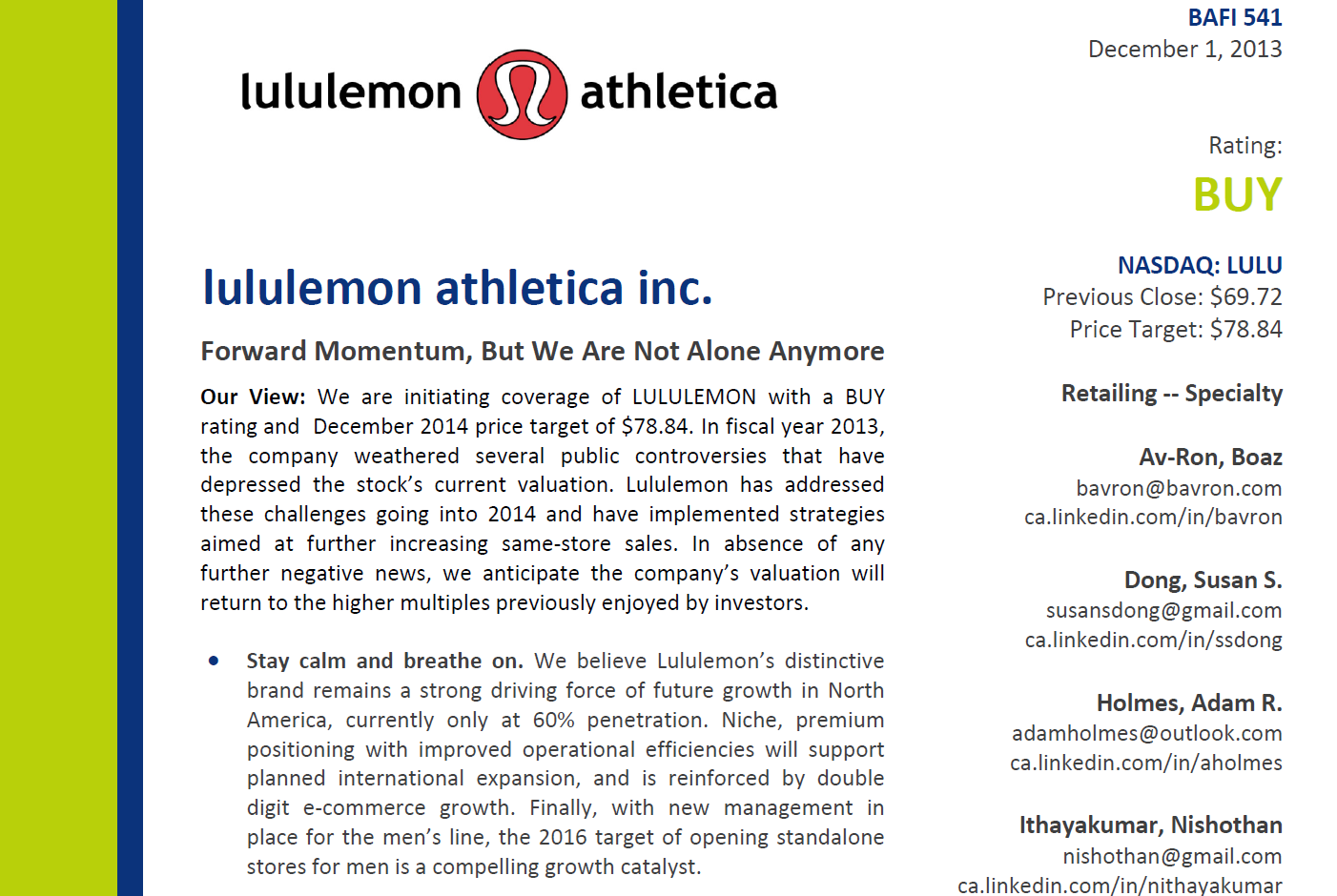My Interests
With a background in sales and experience working in fashion, I am especially interested in the apparel industry. As a consumer, I always carefully select brands and products that appeal to my values and needs. Lululemon is one of the handful of companies whose products I consume and brand that I advocate. One of my goals this year is to become an MBA Summer Intern at Lululemon. In preparation for achieving this massive goal, I have conducted preliminary research on the Global Apparels industry to gain market insight and better understand where I can add value in this vast industry.
Key Findings
The global apparel industry outlook is bright, with anticipated revenues of $760.3 billion in 2018. Although apparel is largely a discretionary purchase, strong growth has persisted since the recession especially in emerging markets while the North American market holds steady. As disposable income per capita grows along with global population, shoppers will continue to seek higher-value clothing in greater quantity.
Among the emerging markets, the Asia Pacific is the world’s largest regional apparel market, projected to grow by $175 billion between 2012- 2017. China specifically contributed to 50% of Asia Pacific’s total apparel sales value in 2012. In addition to steady demands for international luxury brands in countries like China and Hong Kong, Asia is also leading the pack in internet retailing. By 2017, 50% of the world’s internet user will reside in Asia. I am ecstatic that Lululemon is expanding into Asia and this is where my cultural insights and understanding of market segments in China can add value to Lululemon’s marketing and strategy teams.
Within the industry, product segments are generally clearly defined. Women’s and girls’ apparel make up almost two thirds of the revenues generated, while men’s apparel accounts for the remaining third. While women shop more primarily due to changing seasonal trends, men’s spending on clothing is highly discretionary. Even though discretionary, men’s consumption of sports apparel must be just as great as women’s, and this is where market research is necessary to understand men’s purchasing behavior and how they can be converted to join the Lululemon revolution.
Notable Trends
The marketplace is highly competitive with low concentration. The industry’s four largest players each have less than 2% of market share. Thus the keys to success in the industry include establishing strong brands and capturing customers within niche markets.
Consumers are highly influenced by brand image and advertising. One particular marketing strategy on the rise is the opening of “flagship” stores in high traffic central locations within large markets. Companies build unique and interactive physical retails stores as a key destination to attract local and visiting customers.
What’s Next
The industry is mature and steady in North America, but still blooming in emerging markets. There are huge opportunities for growth and I plan to take part in it and make a difference. This leads to Step 2 of “How to get hired as an MBA Intern at Lululemon”.
To be continued…
Euromonitor International. (2013, May). Global Apparel (Part 1): Shifting Distribution Landscape and Market Performance. Retrieved from Passport GMID database.
Panteva, N. (2013, March). Global Apparel Manufacturing. (Industry Report No. C1311-GL). Retrieved from IBISWorld database.



